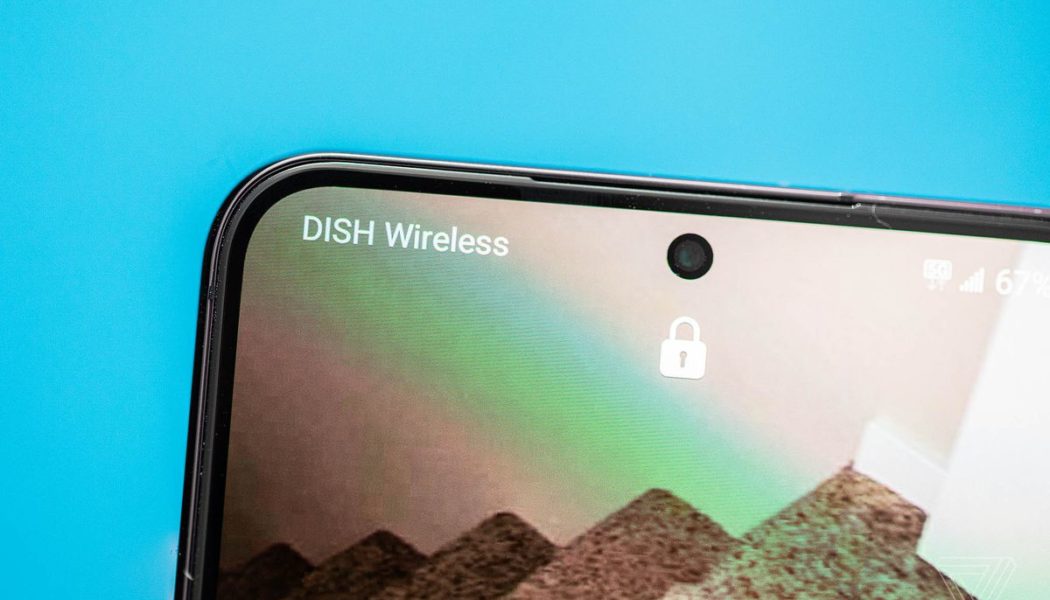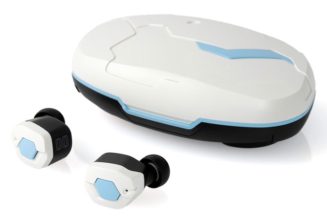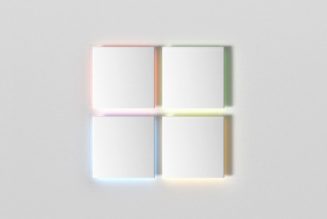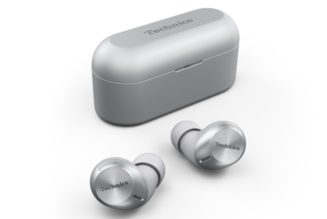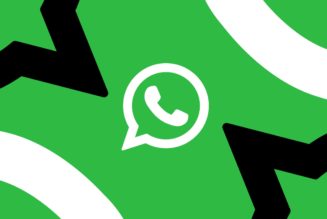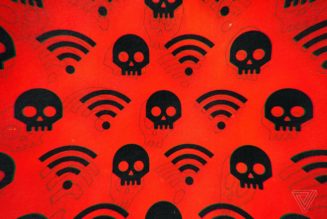Dish is trying something no one’s succeeded at for a very long time: build a new nationwide cell network from the ground up. The 5G service, called Project Genesis, finally went live in “over 120 cities” two weeks ago, and my colleague and I immediately signed up to test it out.
From the start, we had some big questions: how fast will this new network be? Would we even be able to find Dish service? And did the company launch Genesis before it was ready just to meet its contractual obligations with the government and avoid tens of millions of dollars in fines?
Given how buggy the sign-up process was, I didn’t have high hopes when I unboxed my Project Genesis-specific Samsung Galaxy S22. But after a week of testing it in Spokane, Washington, I can’t say that the network is an abject failure — or a soaring success. It is, as its name implies, just a start. And if you go looking for them, it’s easy to find the network’s limits.
First, and most important, is coverage. Dish seems to have done a decent job covering a good chunk of Spokane. Using an app called CellMapper, I was able to tell whether my phone was getting service from Dish’s cell network or whether it was falling back onto coverage from AT&T, which Dish is paying to serve as a backstop for its network. I’ve absolutely found areas where my phone starts using AT&T’s towers instead of Dish’s, but I was getting Project Genesis 5G throughout downtown and on a lot of the interstate. I’d say it vastly exceeded my coverage expectations for a brand new network.
Actually using the Project Genesis network, however, does not feel as impressive. I’ve had major issues indoors, where data will either slow to a crawl (think sub-20 or even sub-10 Mbps) or stop working altogether. I had a very frustrating experience in a restaurant where I had to connect to Wi-Fi so I could message my wife, and there have been several times where I’ve had to switch away from cellular at my house because Dish’s network just wasn’t working there. To be clear, these aren’t buildings where I’d expect to have issues; my normal Verizon-powered phone works just fine at home.
:no_upscale()/cdn.vox-cdn.com/uploads/chorus_asset/file/23661442/akrales_220629_5323_0026.jpg)
This isn’t really how it’s supposed to work. When you’re somewhere that’s not covered by Dish’s towers, your phone should automatically switch over to using AT&T’s network (and, soon, T-Mobile’s). Most of the time, this worked seamlessly — it was just indoors where it struggled. The backup network is good news for anyone who frequently travels outside of Genesis’ coverage area, which, for the time being, is likely to be anyone that uses Genesis. (Due to an agreement with the Federal Communications Commission, Dish has to cover 20 percent of Americans now and up to 75 percent by 2025.) You don’t seem to be getting a watered-down version of AT&T’s service either; I was in New York City for a couple days this week, far, far away from any Dish tower, and was able to pull down a whopping 317 Mbps from an AT&T tower.
(My colleague in the Houston area, on the other hand, has been on AT&T’s network the entire time, though he hasn’t hit the stretch of Westpark Tollway where CellMapper’s crowdsourced map has identified three Dish towers.)
Back to using Dish’s actual network, though, as that’s what I use a majority of the time when I’m home in Spokane. I’d describe the experience outdoors or in a car as generally “fine.” Apart from a few hiccups where the music I was streaming would pause and buffer for a while, the service was perfectly useable for browsing the web, watching the occasional video, and texting. Doing actual speed tests, I got around 130 Mbps in most situations, though in one random spot, I managed to get 246 Mbps. Walking around that general neighborhood later, I wasn’t able to get anywhere close to those speeds again.
While 130 Mbps is fine for my purposes, it’s solidly LTE-tier and not exactly what you’d expect from a network being touted as “cloud-native Smart 5G.” What gives? Well, the only Dish towers I’ve found in my city are using the n71 band to provide service. In terms of 5G, this is a relatively “low” band, meaning it’s optimized for range instead of performance. As PCMag’s Sascha Segan points out, Dish does have the rights to use the n66 band as well. While that spectrum probably wouldn’t match the performance of the C-Band waves carriers like AT&T and Verizon are touting, it’d at least be faster than n71. Looking at CellMapper data, though, the only place anyone running the app has connected to an n66 tower from Dish is in Las Vegas, which has been a testing ground for the network.
I’d bet that for a lot of people, though, the performance I saw would be perfectly acceptable — especially at the $30-per-month for unlimited everything Dish is charging right now. While it’s not exactly comparable, AT&T’s least-expensive unlimited plan starts at $50.
But there are some other indicators that this is a new service. Battery life on my Genesis phone is terrible. The S22 is known to have relatively poor battery life, but there have been several days I had to charge mine twice, even if I had barely used it. One night, I went to bed with my phone sitting at around 20 percent battery. When I woke up around six hours later, it was completely dead.
There are a couple of factors I think could be to blame. One is the fact that I almost always have the phone disconnected from Wi-Fi because the Project Genesis app — which offers perks to early customers — makes you use cellular if you want to get points for the various things it asks you to do (make phone calls, text people, browse websites, play games, watch videos). This makes sense, given that the purpose of the app is to test the network, but I often forget to turn Wi-Fi back on, making the phone rely on battery-hungry cellular.
Then, there’s Dish’s “Network Companion” app, which the company tells me is pre-installed to help send info about your experience using the network; things like if you drop a call (something I haven’t experienced yet, though there are reports of phone calls on Dish’s network not being so great in Las Vegas) or how your device is performing on the network. It doesn’t seem to do that very efficiently, as Android’s built-in battery monitoring system rated it as the most thirsty app on my phone several times. Dish did tell me it’s looking into the issue, and usage does seem to settle down when I’m roaming, but it’s definitely no fun to see a carrier-installed app hogging resources.
:no_upscale()/cdn.vox-cdn.com/uploads/chorus_asset/file/23660420/original_19c7a73b_cf22_442f_a46c_ae424c5f5831_Screenshot_20220621_071452_Device_20care.jpg)
While I certainly wouldn’t recommend Project Genesis to, say, my family members who don’t like acting as early adopters, I was surprised at how often it just felt like using a normal cell phone. Yes, the battery issues did make it feel like a decidedly beta experience, but if I just handed my phone to a random person on the street and told them to surf around for a bit, I don’t think they’d guess it was running on what’s essentially a brand new type of network.
A lot of that, of course, is thanks to the fact that Dish falls back to AT&T’s network when you leave its coverage area. It’s also thanks to the fact that I have relatively light needs for my phone — drag-racing the Project Genesis S22 with my Verizon-powered iPhone Mini yielded some pretty embarrassing results for Dish, especially since the iPhone was usually running on LTE and not 5G. But in theory, Dish is going to get better as time goes on when the company starts bringing new spectrum online (which, again, it’s legally required to do). Perhaps the limits will get even further away from my daily life.
